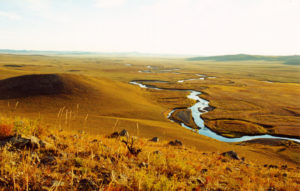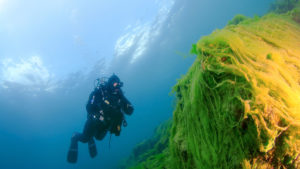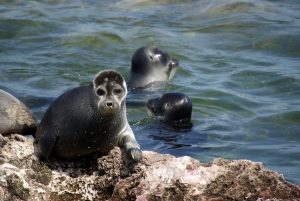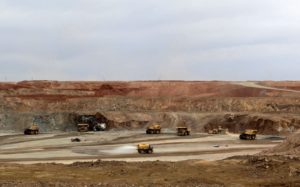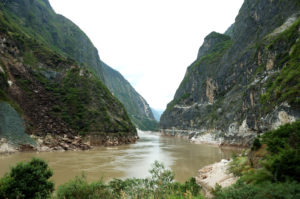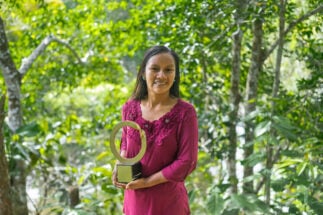The Mongolian government has set its sights on a major expansion of heavy industry in the Gobi desert. Supported by development banks, corporations and Chinese demand, over the coming years southern Mongolia will become home to at least 20 mega projects, including eight coal mines, four coal processing plants, two coal power plants and a copper smelter.
Editor’s note
This is the first of a two-part series. Read the second, focusing on the impact of the Blue Horse programme on the Landscape of Dauria wetlands, here.
All this heavy industry demands a lot of water. A report analysing the gap in supply and demand, sponsored by the World Bank, was published in January. It predicts that by 2040 demand for water in the south Gobi region may increase by two-and-a-half times, which will exceed supply by more than 20 million cubic metres annually (about 8,000 Olympic swimming pools).
The report never questions whether this is a good strategy for sustainable development. While it does describe how to close the gap by improving the efficiency of water use, it also identifies “a surface water transfer” as a way to achieve this: piping water from rivers in the north to the south of the country.
To this end, the World Bank has praised Mongolia’s ‘Vision 2050’ development programme. It states that the programme, announced in 2019, defines “sustainable long-term development pathways for the country, considering its dependency on the mining sector”.
When contacted, a World Bank spokesperson told The Third Pole that the report does not endorse any particular programme and that the trade-offs of a long-distance surface water transfer project should be considered.
Mongolia’s Vision 2050 and the Blue Horse
The Vision 2050 document, unveiled in 2019, was contributed to by a variety of officials, academics and civil society organisations. The result is both aspirational and inconsistent. It calls to “put specific ecosystems, including freshwater resources and watercourse sources under special protection, and protect pristine nature”, while prescribing the construction of reservoirs to regulate the flow of all the country’s major rivers.
This is where the Blue Horse programme comes in: a nationwide masterplan for water infrastructure development. In May 2019, the Ministry of Nature, Environment and Tourism put out a call for consulting services on the project. The announcement stated that it “aims to increase water resources in Mongolia through surface water storage and flow adjustment”. The programme, which has not been published in full, involves building at least 33 multipurpose dams and hydropower reservoirs on 12-13 rivers.
Mongolia has only 13-15 perennial rivers, with renewable freshwater annual resources of about 30 cubic kilometres. This is a small amount to support these megaprojects as well as wetlands and river ecosystems.
The government’s ‘Action Plan for 2020-2024’ named the rivers Kherlen, Onggi, Orkhon, Selenge, Egiin Gol and Khovd as priorities for first intervention.
The Blue Horse programme largely consists of projects designed during Soviet-Mongolian cooperation era in the 1970-80s. These were abandoned after the dissolution of the Soviet Union.
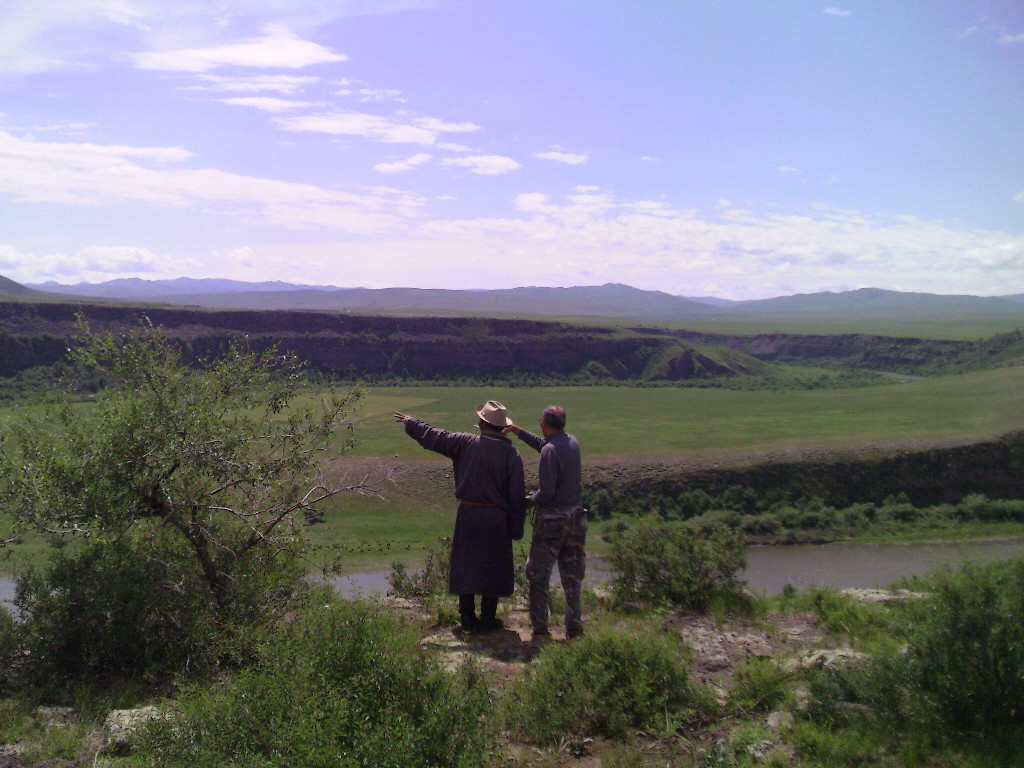
Government caves into mining demands
In recent years, Mongolian politicians have promoted dams and water transfers, promising voters access to water and electricity.
In the late 2000s, demand from the mining sector for water and energy finally yielded financing. As part of the Belt and Road Initiative, the China Export-Import Bank (ExIm Bank) pledged funding for Egiin Gol hydropower plant on the Eg river. The World Bank started feasibility studies for Shuren hydropower plant on the Selenge river and a water-diversion project on the Orkhon river to the Gobi. All three projects threatened to degrade Lake Baikal, the world’s deepest freshwater lake and a World Heritage site.
In addition, the Japan External Trade Organisation assessed the transfer of water from the Kherlen river to the Gobi, which could strangle Dalai (Hulun) Lake, a Ramsar wetland of international importance in China.
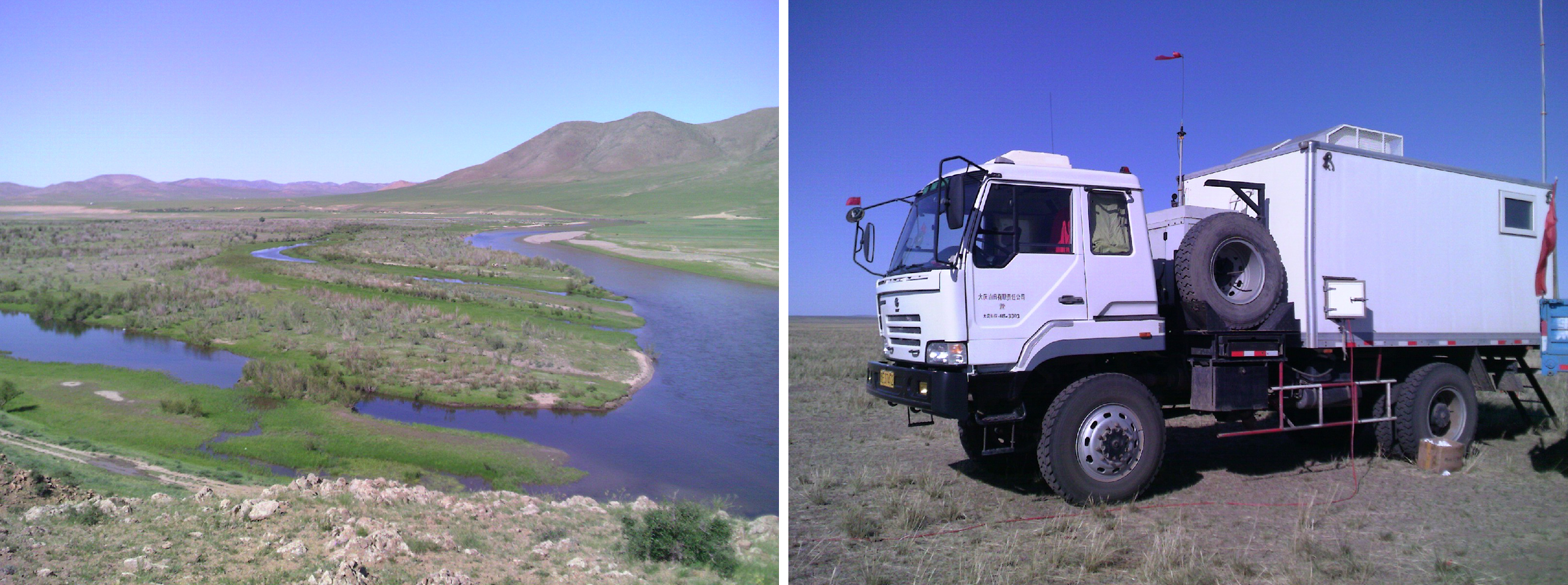
The projects provoked great environmental concern and were met with strong opposition from Mongolian, Russian, Chinese and international civil society, reinforced by UNESCO. The Russian government asked for a strategic assessment of cumulative impacts in the transboundary basin, while China requested to halt the Kherlen river transfer to Gobi.
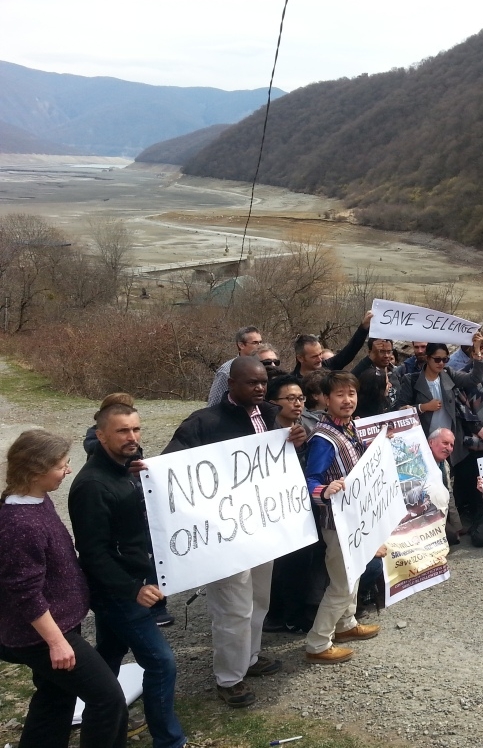
In 2016, ExIm Bank redirected its USD 1 billion loan to other projects in Mongolia, while the World Bank cancelled feasibility studies for both projects in 2018. The Japan External Trade Organisation found that threats to the ecology and communities of the Kherlen valley were so severe that it withdrew from further project planning. (Planning was continued by Mongolian companies.)
In 2018 Mongolia pledged to undertake a transboundary regional environmental assessment (REA) to determine safe limits of infrastructure development in the Selenge river basin.
The REA has not started yet. But planning of the Blue Horse has: a new attempt to support thirsty coal-based industries in the desert.
Hydropower as climate action
The Blue Horse is promoted as acting on climate change. In 2015, Mongolia issued Intended Nationally Determined Contributions (INDCs), non-binding plans to cut greenhouse gas pollution. It requested climate funding of USD 6.9 billion. Half of that was for reservoir construction: USD 3 billion for 675 MW of hydropower for climate “mitigation” and USD 1.8 billion to “transfer water resource to dry regions” as climate “adaptation”.
After criticisms from NGOs and development consultants, the 2020 edition, now called Nationally Determined Contributions (NDC) used safely vaguer language. Now, USD 11 billion is needed for a variety of mitigation and adaptation actions, including the “development of renewable energy”, with an unspecified share of hydropower, and to enhance the “adaptive capacity” of the water sector – primarily for reservoirs and water transfers. The new NDC projects that the country’s emissions will double by 2030 and shows a significant increase in emissions compared to the 2015 edition.
Such ‘Paris commitments’ fit into a wider trend of governments using NDCs to legitimise destructive pet projects, many of them in hydropower and water infrastructure. Because building reservoirs is written into Mongolia’s INDC and NDC, domestic and external financiers of reservoirs can claim, rightfully, that financing of the Blue Horse is in line with the NDCs and goals of the Paris Agreement. Civil society organisations have raised alarm at least since 2017, requesting that “climate measures” coordinate with biodiversity conservation objectives. And for good reason: the Blue Horse programme alone threatens to degrade at least two World Heritage sites, four Ramsar wetlands, four UNESCO biosphere reserves and all of Mongolia’s major free-flowing river ecosystems.
Damming Ramsar wetlands
Excitement from the cancellation of funding for the Egiin Gol hydropower project faded in 2019, when Mongolia decided to use USD 270 million from that loan to build a 90 MW hydropower plant on the Khovd river. The Erdeneburen hydropower project is allegedly needed to power Mongolia’s sunny western region, enabling a coal mine and cement and steel plants.
The Khovd river is critically important for the Great Lakes Basin of western Mongolia. It empties into Khar-Us lake and a 321,360-hectare Ramsar wetland, including Khar-Us, Har and Durgun lakes. Several endemic fish species occur in the lakes and Khovd river, as well as a large number of migratory waterbirds, including the globally threatened swan goose and relict gull. Changing the natural character of a wetland is explicitly prohibited by the Ramsar Convention.
China’s ExIm Bank has shifted from funding a dam that could negatively affect Lake Baikal to funding a dam that is likely to completely degrade the Khar Us lake. While tensions about transboundary waters are absent, the lake is an important part of the East Asia/Australasia Flyway for migratory birds which connects many countries.
In early 2020, 265 civil society organisations from 70 countries called on the Chinese government and its policy banks to ensure that Covid-19 financial relief along the Belt and Road is provided only to investments that satisfy specific criteria, and avoid supporting projects mired in environmental, social, biodiversity, climate, or financial risks. Among the 60 most dangerous projects featured in this briefing was the Blue Horse, along with Erdeneburen Hydro.
The ‘General Loan Agreement’ that Mongolia signed with ExIm Bank reportedly allows only three companies to compete for the project: Power China, China CAMC Engineering Co., and Shanghai Construction Group.
Another, less publicised, source of funding for dam-building is the issuance in 2020 of ‘Nomad bonds’. The offering memorandum states this is “expected to reduce the country’s balance of payments gap and free up resources that otherwise would have been used to repay such (old) bonds at maturity”. However, Mongolia intends to use this “freed-up” money to “fund feasibility studies and development of the 90 MW Erdeneburen hydropower plant-related infrastructure, including power transmission lines and its feasibility study”.
This seems paradoxical given Nomad bonds are issued under the strict control of the International Monetary Fund. The IMF is supervising the next bailout of Mongolia, which recently was on the verge of debt default after wasting proceeds from previously issued ‘Chinggis’ bonds on stalled megaprojects. The public was informed by the Ministry of Finance that new bonds are issued in order to refinance old bonds, and not informed that they will support start of new megaprojects.
Blue Horse is politically sensitive as Mongolian elections loom
The issue is particularly pressing now, just ahead of the approaching Mongolian presidential elections on 9 June. Media coverage has focused on the tender for Erdeneburen Hydro, with leading presidential candidate Ukhnaagiin Khurelsukh (the former prime minister) using his success in agreeing the start of construction with Chinese organisations as a campaign issue.
But Erdeneburen is just one of many damaging Blue Horse projects. In eastern Mongolia, a dam is being built in the name of climate adaptation on the river Ulz. This river sustains the Landscapes of Dauria wetlands, a transboundary World Heritage Site. The real purpose of the new reservoir is likely to supply water for irrigation, construction and mining.
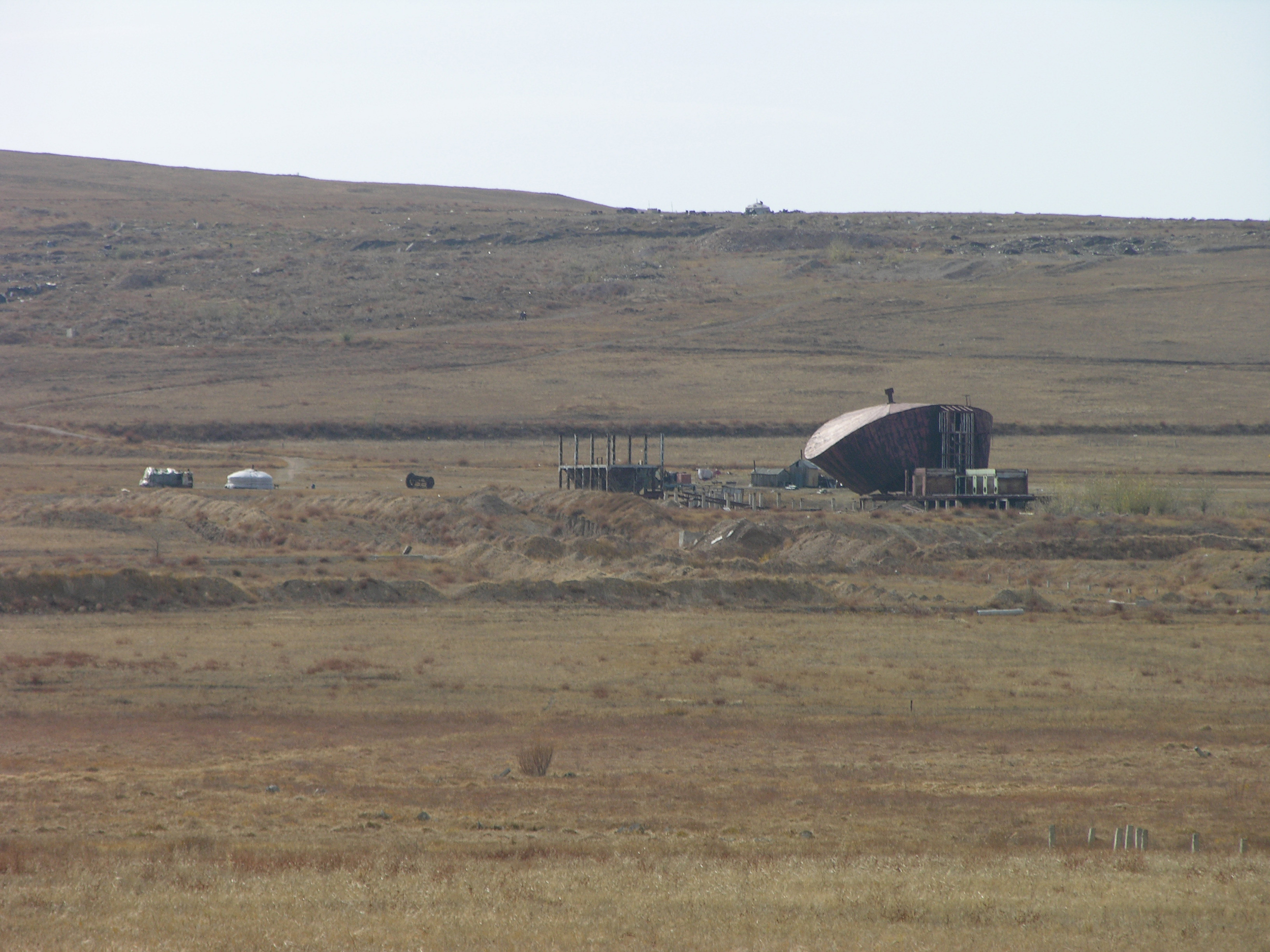
Conservationists are not the only ones terrified by the Blue Horse. In March 2021, the International Conference of Water Management Organizations adopted a resolution on the risks posed by haphazard projects in shared river basins, requesting “the UNDP, the International Adaptation Fund, the Secretariat and relevant bodies of the UNFCCC… to conduct a systematic comprehensive socio-environmental assessment of water management measures proposed by countries as part of their Nationally Determined Contributions (NDC) for mitigation and adaptation under the Paris Agreement.”
It also recommended to suspend construction of the dam on the Ulz river until a joint comprehensive environmental and economic impact assessment is made, and to analyse alternative ways to meet water demands as the climate changes.
Little time is left to stop the Blue Horse, fuelled by climate funding, from trampling the pristine river ecosystems and nomadic lifestyles in Mongolia’s river basins.
The Third Pole invited China ExIm Bank and Mongolia’s Ministry of Nature, Environment and Tourism to comment on the issues raised. This report will be updated if and when responses are received.
